In the second instalment of her 4-part article series about postural awareness, Gwendolyn Masin, concert violinist, author and educator, discusses how much easier playing can be if we allow our bodies to move freely
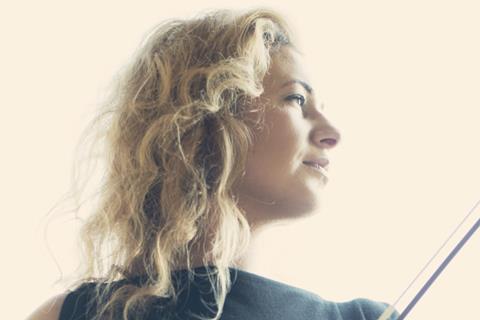
As a musician, what do your feet have to do with your hands? How does the crown of your head allow you more space to move your arms? How can the slightest adjustment of your spine moving into length add substantial volume to your sound? How can a simple adjustment of the shoulder negate pain and add more energy to your performance?
The answers to these questions are found in our understanding of primary positions from which we initiate movement.
A lot of the instruction we receive regarding these positions comes from a place of discipline. From an early age we may hear ‘lie still!’ by our parents as they try to lull us to sleep or dress us, and ‘sit straight!’ ordered by a school teacher in exasperation. Our understanding of what positions mean are clouded further by comments such as ‘relax’, which is perhaps the one most steeped in cultural misconception. Rather than trying to fit our bodies into startlingly motionless commands, comparable to trying to fit a triangle into a square, let us explore the positions in which we primarily spend our lives, the so-called starting positions of lying, sitting and standing.
As musicians, we hear complex instruction when playing such as ‘move your shoulders down!’ But, what does that mean? It results in the collarbone sitting on top of the ribs and tension (as opposed to tone) in the muscles. ‘Move your shoulders back’ will result in a flaring of the ribs and a military-like pose, the tension of which is adjacent to the word ‘military’ itself. The body is connected like a puzzle. And, if we insist that one of those puzzle pieces be pushed together or made to fit into a part that it is not designed to be inserted into, we are expecting the body, too, to get stuck in a way in which it was not designed.
Our bodies love movement; they are meant for movement, and living means movement in every way. Right now, even if you think you are sitting still, you are not. You’re always in motion, your body moves in rhythmic waves simply because you are breathing. And, every time you breathe, your sternum moves, your ribs move, your diaphragm is moves up and down. I invite you now to take a breath and close your eyes. When you bring awareness to your breathing, you tune into your body. This moment of tuning in to your body is called interoception, the sense of the internal state of the body. From this inner perspective, let us imagine the body as a cathedral akin to the music of Bach: an architecture of awe-inspiring beauty and precision. Inside that cathedral lives a sense of integrity to which all movement, vibration, and clarity of motion assembles, like myriad magnets gathering around a central core.
Read: Journey to change – towards a better understanding of ourselves
Read: Aaron Rosand: 5 ways good posture will improve your playing
As you read this article, you are most probably sitting. Sitting can be very taxing on the body, and without awareness while sitting, it can lead to various health problems ranging from the shortening of hip flexor muscles to compression in the discs of our spine. Part of the problem is that the compressive forces in the lower back are increased when sitting. Sitting also tends to make us fall into rigid positions—we stop doing what our bodies like most, moving. Above, you brought your awareness to your breath for the sake of experimentation. Now, I’d like you to bring awareness to how you are sitting. Do you have your legs crossed? Are your arms folded? Are you leaning to one side? These things, however subtle they may be, shift your body out of balance.
Muscles have memory, and when we move incorrectly our muscles remember it, even after the movement and if we are unaware of it. We become physically insensitive to ourselves. When you couple an already heightened level of tonus in a particular group of muscles with the pressures that musicians inevitably prescribe to themselves to perform well, we begin to build layer upon layer of anatomically incorrect movements, placing strain on our bodies, which leads to undercurrents of physical pain which can, in turn, lead to psychological stress. The sum total of all these elements prevents us from achieving our personal best.
If, at any point there is too much tension in the body, it creates discomfort or pain. For example, let’s observe sitting in a so-called ‘relaxed‘ position. Let’s call this Alignment A. This is often a position in which we slouch: the pelvis in a posterior tilt, the back rounded, the shoulders slumped forward, the breast sunken inward and the neck and head too far forward, which causes shortening in the back neck-line. Or, perhaps you swing the other way. Let’s call this Alignment B: the pelvis in an anterior tilt (a professional description for something colloquially referred to as ‘a duck’s behind‘), an over-extended lordosis of the lower back, the front of the rib cage thrust forward, the shoulders pinned back. Both positions carry muscular imbalance. Hindered blood circulation through the body’s tissues in all these areas causes oxygen deficit and creates pools of chemical soup.
Some of us, at this moment, have a passive sitting position. In Alignment A, you can correct yourself by trying to find your ischial tuberosity. They are those big bones, also referred to as ‘sit bones‘. If you rock forward slightly in your chair you can feel them under you. Thereafter, draw your attention to the crown of your head and imagine it being drawn to the sky. Awareness between these two poles creates a sensation that I call ‘root and rise‘. This means that you think about rooting down through the pelvis, whilst rising up through the crown.
Some of us are in an overactive sitting position: Alignment B. So, as to become more familiar with an optimal sitting position, try to connect the back of your chair with the back of your rib cage, noticing a sense of tone in the abdominal muscles as you do so. Bring awareness to how your pelvis moves into a balanced, central position when you do this. Auto-elongation of the spine will give you the impression of having gained length. If you are driving, you may need to adjust your rearview mirror.
Sitting and standing are positions that are underestimated. They are actually quite complex. If you are reading this and experiencing alignment awareness for the first time, it might be worth doing so from a lying-down position. The lying position I’m referring to is on the back, with face and torso toward the ceiling or sky. This position is also referred to as the supine position. It is used in practices such as yoga, pilates, Alexander Technique, and Feldenkrais Method as a way to become conscious of symmetry of the body, to work with the breath, for relaxation exercises, and for restoration. Part of the reason that we lie down to experience how our body feels is because it gives us a sense of the shape of our bodies. After all, we have no eyes in the back of our head or body, and this is why we often lose sight of it.
When exploring the body through lying positions, it is recommended to use a hard surface. Lying on a soft surface such as a mattress leads the back and pelvis to collapse, defeating the purpose.
I find that the supine and semi-supine positions give the individual clearer awareness and more specific feedback than sitting and standing. It should be noted, however, that the supine position, used for example in Savasana in yoga, is less of an ideal starting point for awareness practice than semi-supine position. There are a number of reasons for this. Those uninitiated in body awareness rarely have a three-dimensional understanding of the musculoskeletal system, therefore they are less able to move their bodies according to its inherent design. In supine position when the legs are fully extended, there is a tendency to pull on the pelvis. This exaggerates the lumbar curve; and at the same time, the head is thrown back which causes the neck muscles to shorten. In semi-supine position, by raising the knees up, hip-width apart and with feet at equal level, there is a reduction in the lumbar curve of the spine. Supporting the head with books helps the neck muscles to lengthen and prevents a pulling back of the head. Both these things encourage lengthening and a release of the muscles in the back, legs, and neck.
Once in semi-supine position we can draw awareness to our breath. This is the easiest way of accessing ourselves and focusing on our senses. Breath has a huge impact on our nervous system, which in turns helps us to achieve the sense of calm that is so helpful in encouraging a peaceful exploration of how our body feels. When we lie down with our knees up, there are, apart from the feet, elbows, and hands, further weight-bearing areas: the spines of the scapulae (the shoulder blades), the posterior superior iliac spines (the back of the hips), and the occiput (the back of the head). If we are on a fairly hard surface, the contact of these points with the ground will help to stimulate supporting reflexes and allow all the weight-bearing areas to sustain the body in an equilibrated fashion. Gravity enables us to let go of the sacrospinalis sheet and neck muscles, to gain a sense of equal alignment in the torso and ribs, to let go in the hips and thighs, and to release the throat muscles. Having said all that: I catch myself holding in my hips or shoulders even whilst in semi-supine position, and that is the exact learning curve! To realise where we are holding and releasing, and to use the floor and gravity as our teacher.
Read: 8 ways for violinists to improve posture
Read: Playing the violin places constant strain on the body, yet we leave posture to chance
Standing is arguably less difficult than sitting. However, we are susceptible to shortening when standing upright and often experience a downward pull which leads to chronic muscle stiffness, inefficient breathing, interference with our sense of balance, excessive pressure on our joints, and failure to nurture the correct environment for the optimum functioning of the internal organs, including the heart, lungs and digestive organs. In a more intermediate stage of interoception, it will become clear why a practice such as yoga is so hugely beneficial for our bodies and our minds. Yoga recognises and helps us understand the need for stretching and strengthening muscles; pranayama, teaches us to control breath; sun salutations exercise our sense of balance; movement encourages our joints to produce collagen which in turn, helps to maintain the integrity of cartilage; and many asanas promote internal function such as that of the digestive organs.
In a first step, enjoy the semi-supine position as it provides support for the body in letting go of tension, restoring length of muscles, and reestablishing the natural working of the postural neuromuscular reflex system.
When working with my students, I suggest that they play basic studies or scales whilst in the semi-supine position. This can give them a chance to gain awareness of movement as they play. The same can be done whilst standing with one’s back to the wall. The flat surface offers us precious feedback.
Standing is considered by many as being more tiring than sitting. The fatigue is often caused by misinterpretations of ‘good posture‘. We observe the shrinking of the body, the slouch or downward pull that I outlined before. Let’s take the way we hold our heads, as an example. The weight of the head is 4.5 to 6.5 kilos, which is heavier than a bowling ball. When the weight of the head delivers vertically through your body, it’s a heavy load to carry, but your body is designed to do it. When you stretch the head chronically forward as we do when we read—be it computer screens, books or scores—it becomes a lot more difficult for us. The neck muscles grip in order to hang on. So, as the head moves forward (which is disadvantageous for the body’s design, remember the bowling ball) and away from a central axis, the strength needed to support the head increases. This leads to greater tension in the muscles and distortion that results in compression and a pulling down of the skeleton, commonly known as slouching.
However, with a different understanding of the effortlessness that standing offers, we observe the thrill of a person unraveling upward toward their full height. A useful way to understand this is to consider the postural role of your muscles. In maintaining posture— balance and integrity of movement—it is the muscles’ job to support the skeleton at its full size. I refer to my previous article for The Strad entitled ‘Journey to Change – Towards Better Understanding of Ourselves’, in which I argue that before we embark on physical education at school, or indeed, the playing of an instrument, we miss tuition in the origin of human movement.
We are not taught about the importance of moving the spine into length, or about its buoyancy, its weight-bearing and weight-distributing qualities. We are not taught to move from the core, which is an integral part of understanding how we ideally move through space. Many of us think that training the core simply means training one’s abdominal muscles. This is possibly a mistranslation accrued in an effort to explain complex things quickly. With the core, what we should understand is a system of support that lives deep within the body. Elements that comprise our core are the bony structure of our body, our deep support muscles and fascia. Fascia, a relatively recent discovery in human anatomy, is the biological fabric that holds us together, a network of connective tissue. When seen on its own, it is one completely uninterrupted piece of fabric that runs from the tongue to the toes. This suggests that what we do with our toes affects our head, what we do with our tongue affects our hip joint — physically spoken, we are a universe unto ourselves, intricately and fully connected.
In order to feel more alive and strong when standing, I suggest the following process to gain a sense of appropriate tension.
Read: Elements of Alexander Technique: discovering a natural approach to string playing
Read: Natural playing on violin and viola, inspired by the Alexander Technique
Train your attention to how your feet touch the floor. Ideally, stand without shoes or socks to allow for the greatest sensation and feedback. Your feet should hug the floor at the base of your big and little toe as well as the heel, creating a triangle-like zone of contact. Once this sensation grows more apparent, rock back and forth between your toes to your heels. Make the movement increasingly smaller until you get to a place where you feel that weight is distributed evenly along the base of the big and little toe as well as the heel. For many, this is already enough to throw their sense of balance off kilter. Most of us will feel as if we are either leaning too far forward or backward. However, just peek at the mirror and it will show you otherwise. You can try these first steps of new physical experience with your instrument. Play as you normally would, and then again with this new awareness of balance of the feet. Many musicians find that their sound grows with the discovery of balance. By not leaning forward or backward too much, the newly gained insight into weight distribution has a positive effect on sound production.
Next, draw your attention to the arch of the foot. The arch is lifted when in contact with the floor via the base of the big and little toe as well as the heel. Why is this? Let us define the two areas of the foot (toes and heel) as two poles. Both poles have clear directions of rotation so that a spiral can be formed. An awareness of spirals is helpful when working with the body. Spiral staircases have solved space problems for centuries. A spiral staircase can be described by the angle of curvature (radius) and the angle of inclination; it can be steep and narrow, or wide. This is exactly how the angles of rotation of our bones, ligaments and muscles are determined, for example, in the leg axis or arch of the foot.
The arch of the foot along the base of the big and little toe, as well as the heel, when in contact with the floor enables load stability. This movement in the foot leads to a lift in the quadriceps, which in turn can offer a different sense of placement to the pelvis. Awakening the pelvis is as interesting as it is beneficial. One way of accessing it quickly is to imagine the coccyx, or tail bone, being tucked under. When doing so, you will feel an adjustment in the lumbar spine.
Now think about the crown of your head (not to be mistaken with the top of your head) and how it reaches for the sky. Maintaining these different points of orientation and movement along the body will take more than one attempt, in most cases, but should afford you access to the realization of more space in your body and, despite the mental effort, a feeling of lightness. Moving the crown of the head upward, particularly when imagining the coccyx (tailbone) moving down toward the Earth creates length along the spine and space in the trunk and ribs. This, in turn, lets the arms move with greater independence and agility, which translates into an easier bow stroke and greater understanding of how energy moves through the arm and creates sound.
Alignment and movement of the body is remarkable and hugely important to how we sound and feel when we play. Let us now look at two obvious issues that arise when we slouch with our shoulders moving forward. Both issues stem directly from the shoulders being pushed up and forward, the chest slumping inwards. Both issues have a huge impact on not just our body’s true design, but also on our true sound.
Let’s start with the right arm, responsible in such great part for our tone. A shoulder that is being driven up and forward results in any number of mistakes in the bow arm. However, the realisation that the collarbone and the shoulder blade are a unit may have a huge impact on what one will sound and feel like. It is impossible to move the shoulder blade if there is no movement in the collarbone. When moving the bow to the tip, the shoulder blade needs to come along for the journey. This movement in the shoulder blade is not the same as initiating the movement from the shoulder blade; instead, it follows the movement of the hand and arm. By allowing the shoulder blade to move, rather than trying to keep it down or back, we let the shoulder blade slide around the ribs and suddenly find freedom of movement that translates directly into sound.
Observing the left side, when we pull the shoulder blade down or back, we are shortening the muscles in that area, pulling the shoulder blade toward the spine while the rest of the arm tries to reach forward toward the neck of the violin. This confusing struggle between the shoulder blade and arm causes a lot of strain in the region, something that nearly all string players experience.
When the shoulder does not follow the movement of the arm, it is helpful to establish the understanding that the side of the shoulder blade is a socket. The ball that fits into it is the head of the humerus. If one wants the arm to move, one has to let the socket, which is part of the shoulder blade, follow the movement. This dance of the shoulder blades is commonly described as a relief for the player—less unnecessary tension, more agility in the arms and a better understanding of how we use energy results in a free sound. In addition, a sense of calm floods the brain as the body is released from unnecessary tension.
I would like nothing more than to go on and on, peeling layer upon layer of misunderstanding away in lieu of clarity—but this is just one article, so allow me to encourage you to take the time to learn more about yourself and your body as you continue your journey in music. Let us avail of knowledge and live it, shaping it into wisdom. Let us stand on the shoulders of giants in order to see further.
In a next article, Gwendolyn will delve into some of the benefits of yoga for musicians.

Gwendolyn Masin is a concert violinist, artistic director, PhD scholar, author and educator. She has been Professor of Violin Studies at the Haute École de Musique de Genève, Switzerland, since 2013. She is founder of The Exhale, a series of holistic music masterclasses and workshops that foster musical freedom, inspiration as well as musicality as a whole, based on an harmonic balance of concentration and performance, along with physical and mental well-being. It is designed for professional musicians, students who wish to pursue a professional career, players in search of professional development, and amateur musicians. During a hugely challenging time for the arts and culture worldwide, she has brought The Exhale online in order to continue its mission. Gwendolyn authored her own method for teaching beginners. It is called Michaela’s Music House and is available in English and German. Gwendolyn is artistic director since 2006 of the annual GAIA Music Festival in Switzerland which focuses on chamber music, and co-founder and curator of the International Master Course by Dublin’s National Concert Hall that takes place during the summer.

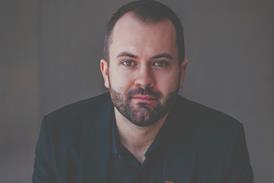
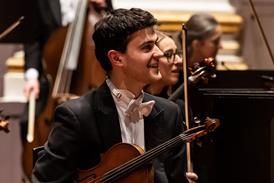
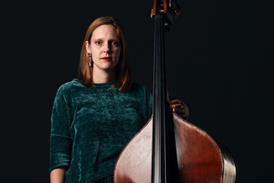
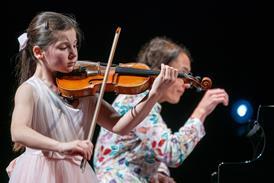

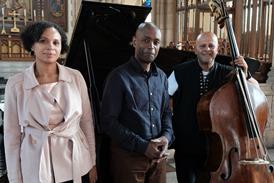



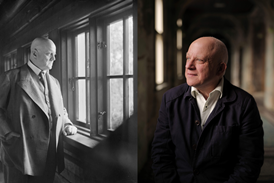
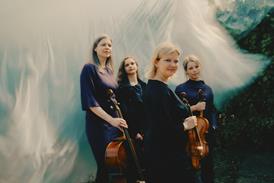
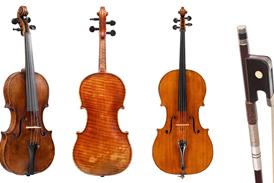
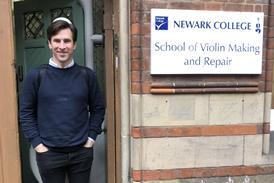
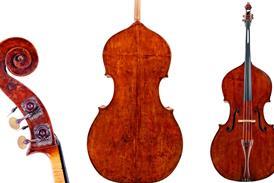
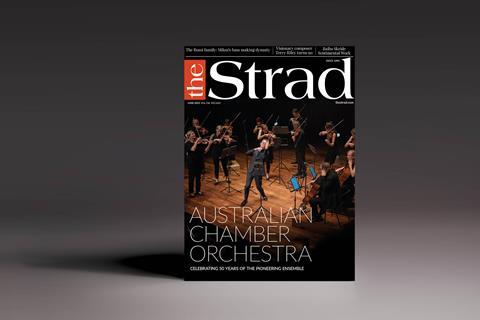




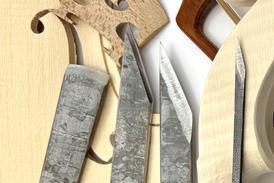
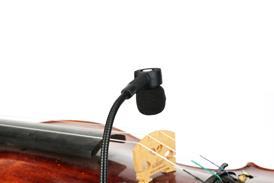
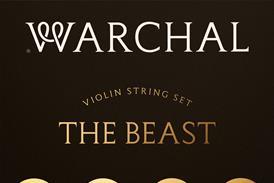












No comments yet